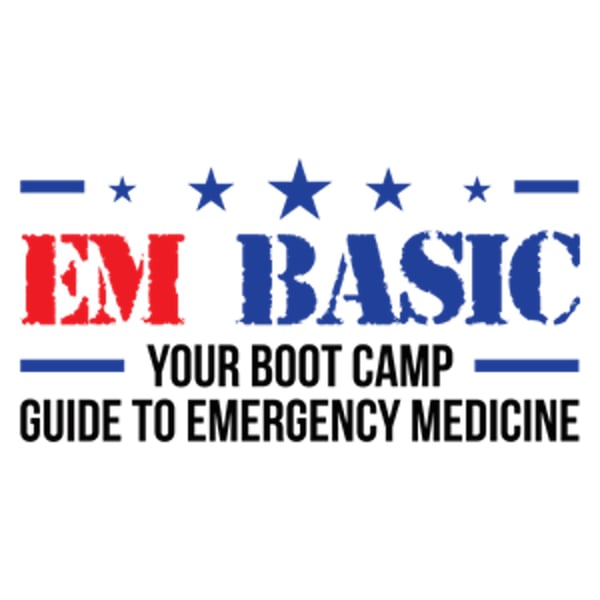92 Pediatric Traumatic Brain Injury (TBI)
EM Basic
EM Basic LLC
4.6 • 665 Ratings
🗓️ 4 May 2020
⏱️ 22 minutes
🧾️ Download transcript
Summary
Join Christopher Watson, Zac Hodges, and Dan McCollum as they discuss the management of pediatric traumatic brain injury.
- What should you look for on exam?
- When is intubation appropriate?
- How can you treat increased intracranial pressure?
- Where should you send your patient if you are at a community emergency department?
We go beyond the basics here, discussing a very challenging topic.
Transcript
Click on a timestamp to play from that location
| 0:00.0 | This is Dan McCollum, and once again I'd like to welcome me to E.M. Basic. Today we're talking |
| 0:04.8 | about traumatic brain injuries with the focus on children. I'm joined today by Zach Kodges, a pediatric |
| 0:09.9 | resident, as well as Dr. Chris Watson, a pediatric intensivist here in Augusta. |
| 0:15.1 | Let's get started with a case. An eight-year-old male is brought to the emergency department |
| 0:19.3 | at a small regional hospital after an ATV accident. |
| 0:22.8 | He was not wearing his helmet. |
| 0:24.1 | EMS reports that he was initially alert at the scene but has developed worsening mental status en route. |
| 0:29.1 | They state he has abrasions on his forehead, but there are no other obvious signs of trauma. |
| 0:33.5 | He is currently receiving oxygen by a non-breathing face mask and a cervical collar is in place. |
| 0:38.7 | Dan, how would you start your initial evaluation of this patient? |
| 0:42.2 | Blunt trauma and children usually results in multi-system injury. |
| 0:45.6 | You have to assume that there are multiple injuries and approach the patient in a systematic way. |
| 0:50.0 | Start with the primary survey before moving on to a more detailed physical exam. |
| 0:54.0 | Remember A, B, C, D, E, which stands for airway, breathing, circulation, disability, and exposure. |
| 1:02.9 | In patients with traumatic brain injury, the Glasgow Coma Scale, or GCS, can help estimate the |
| 1:07.5 | level of severity of brain injury. A GCS of 8 or less suggests severe brain injury. |
| 1:12.8 | Remember that the score is based on what the patient is doing in terms of opening their eyes, |
| 1:16.5 | responding by voice, and movement. |
| 1:19.0 | 15 is the highest score. Three is the lowest. In any case of severe traumatic brain injury, |
| 1:24.2 | I want to quickly identify and treat any cause of ongoing or secondary brain |
| 1:28.9 | injury. My first priority is to address any possible ongoing hemorrhage, secure the airway, |
| 1:34.8 | ensure adequate ventilation, and address possible hypovalemia. We need to insert two large bore IV |
... |
Please login to see the full transcript.
Disclaimer: The podcast and artwork embedded on this page are from EM Basic LLC, and are the property of its owner and not affiliated with or endorsed by Tapesearch.
Generated transcripts are the property of EM Basic LLC and are distributed freely under the Fair Use doctrine. Transcripts generated by Tapesearch are not guaranteed to be accurate.
Copyright © Tapesearch 2025.

